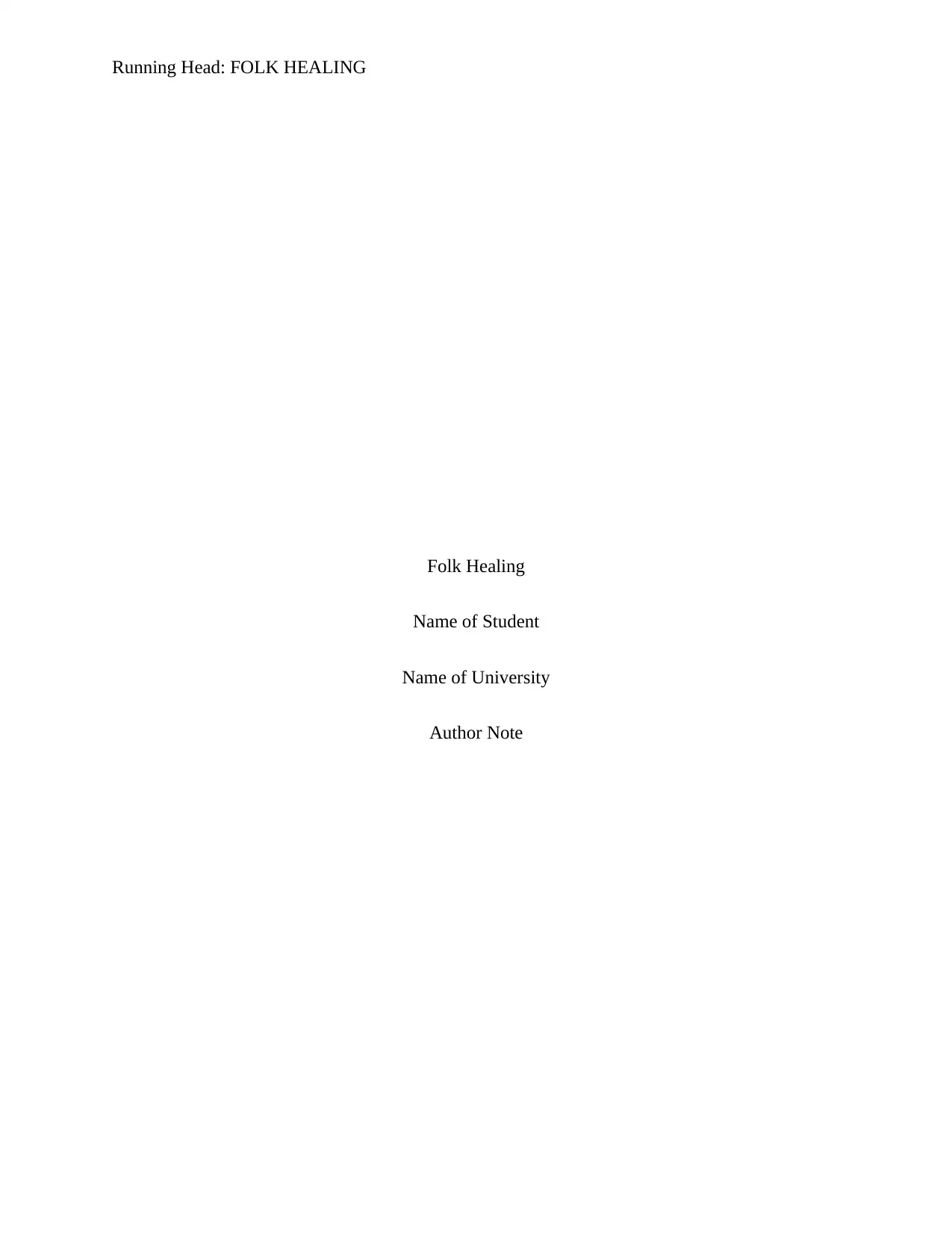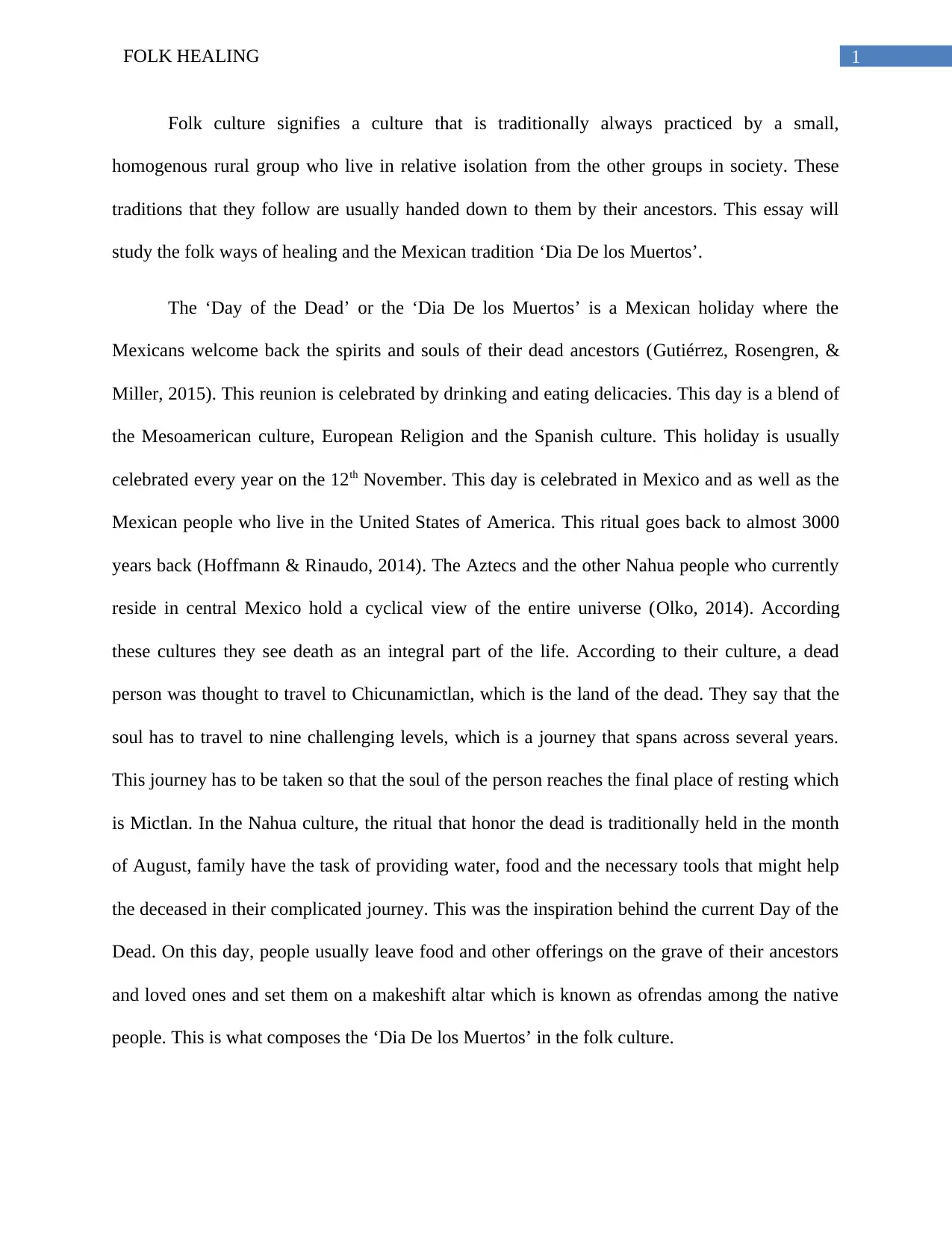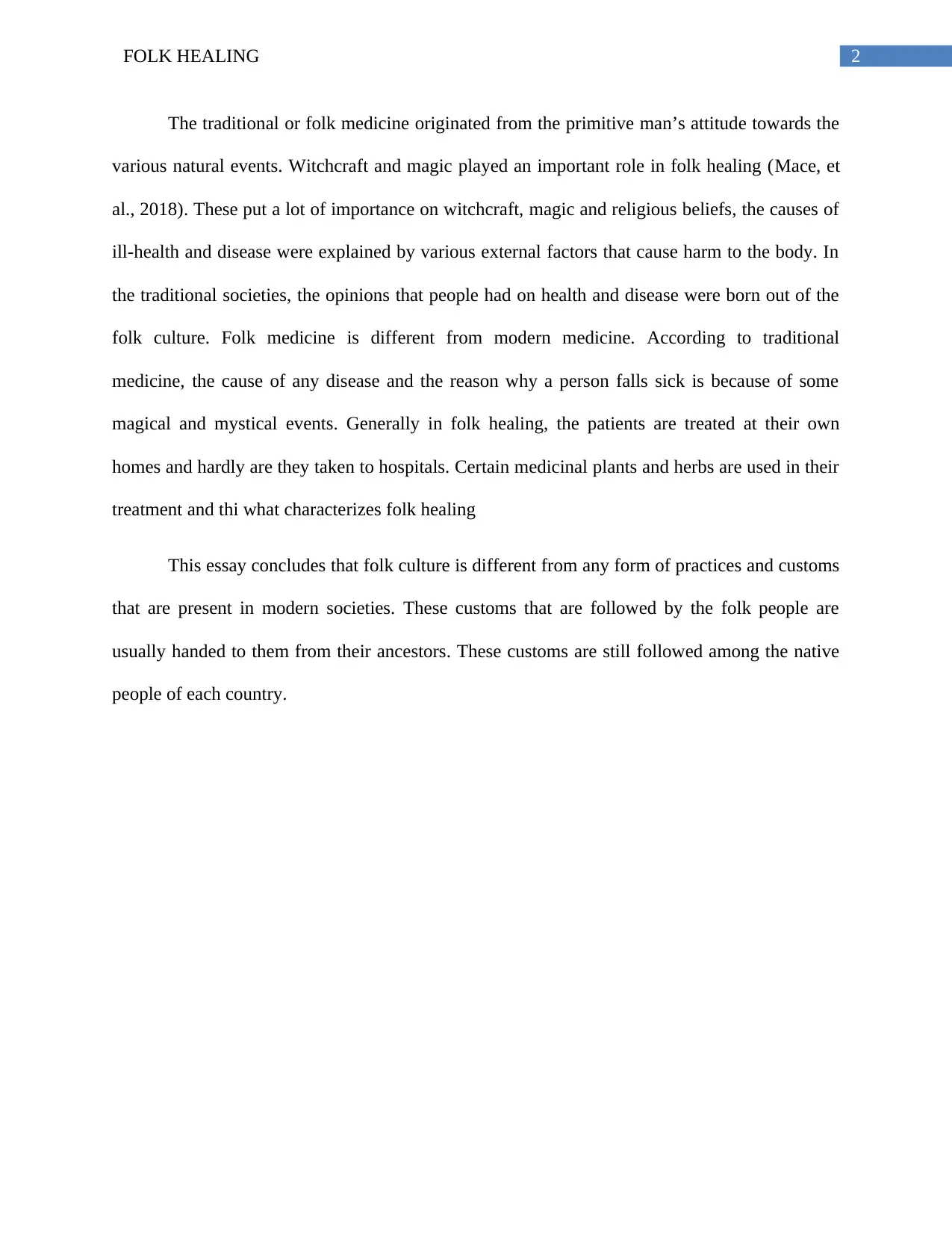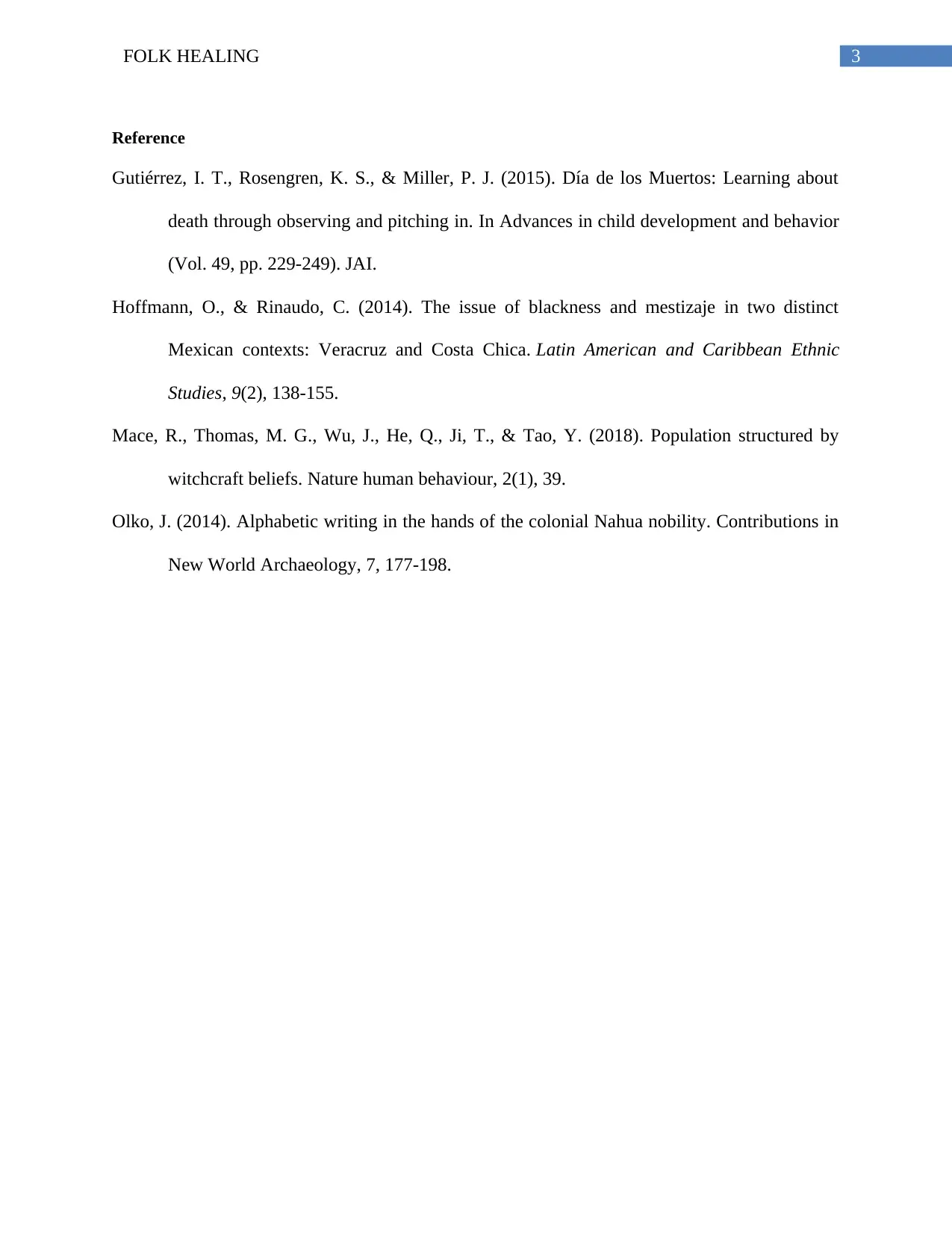Folk Healing, Birth, Death, and Cultural Practices: Essay Analysis
VerifiedAdded on 2022/12/22
|4
|815
|57
Essay
AI Summary
This essay delves into the realm of folk healing, exploring its practices and customs in contrast to modern medicine. It examines the origins of folk healing in primitive societies, highlighting the roles of witchcraft, magic, and religious beliefs in understanding health and disease. The essay focuses on the Mexican tradition of Dia de los Muertos, detailing its historical roots in Mesoamerican and Spanish cultures, and its significance as a celebration of ancestors and the cyclical view of life and death. It further analyzes the rituals associated with birth and death, including the preparation of altars and offerings, and how these practices relate to folk healing. The essay emphasizes that folk culture, including its healing methods, is often passed down through generations and is distinct from contemporary societal norms. The essay concludes with a discussion of the unique aspects of folk healing, contrasting it with modern medicine and highlighting the importance of cultural context in understanding health practices.
1 out of 4






![[object Object]](/_next/static/media/star-bottom.7253800d.svg)